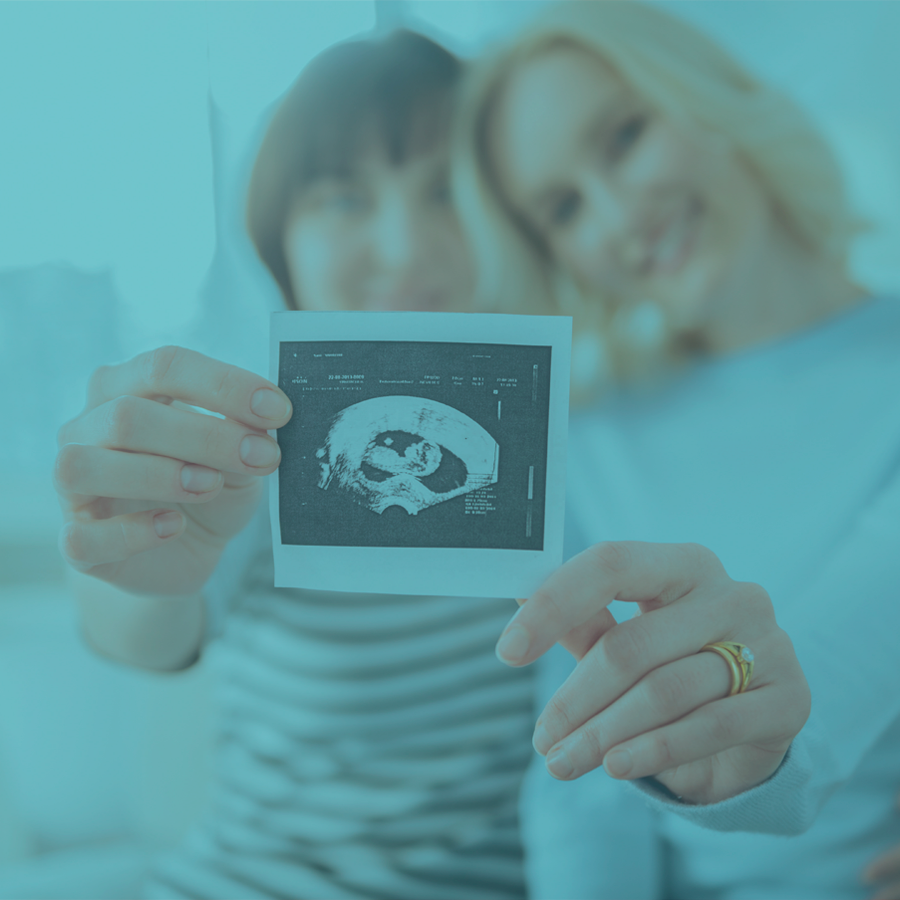FIRST VISIT
During this first visit, Fertty’s medical team evaluates the entire medical history of both women. In this session all the tests performed will be reviewed, new tests will be requested if they have not been previously ordered (FSH on the third day of the cycle, Anti-müllerian Hormone or antral follicle count by ultrasound) and a transvaginal ultrasound will be performed on the recipient mother. All this will help our team to design an exclusive personalised treatment.
CYCLE SYNCHRONISATION
Most of the time both women do not have their periods on the same day of the month, so the recipient woman may be at an inappropriate time for pregnancy to occur. To perform synchronisation, anovulatory pills can be used, allowing the cycle of both mothers to be synchronised in a period of 7 to 21 days.
If the couple chooses not to take anovulatories or if there is a drawback, the embryos generated can be frozen and the transfer can be performed in a natural cycle.
OVARIAN STIMULATION OF THE MOTHER WHO PROVIDES THE OVUM
Normally women produce only one egg during a menstrual cycle. Fertty’s medical team will use injections to instruct your ovaries to produce several eggs. This process lasts between 8 and 11 days and during this process Fertty’s team performs ultrasound and analytical controls of E2 or progesterone. Once the follicles have reached an adequate size, an injection of hCG is used to mature the eggs and induce ovulation.
ENDOMETRIAL PREPARATION OF THE RECIPIENT MOTHER
The recipient mother will receive oestrogen treatment in the form of pills or patches that prepares the inside of the uterus to be receptive to the embryos. This treatment lasts between 10 and 15 days, and on the day that the eggs are extracted from the couple, progesterone treatment is started in the recipient mother to allow the embryo to attach to the uterus.
EGG RETRIEVAL FROM THE EGG DONOR MOTHER
36 hours after the HCG, we performed the aspiration of the eggs from the ovaries. It involves making a small puncture through the vagina. The medical team performs an ultrasound in which a needle will have been attached to the ultrasound machine and, through this fine needle, all the eggs available in that cycle will be aspirated. At the same time, you will be mildly sedated for your comfort.
The selected donated sperm sample is checked once more and prior to leaving the centre the number of eggs collected will be reported.
EMBRYONIC DEVELOPMENT
Fertty’s team of biologists unites the eggs with the sperm so that fertilisation can occur spontaneously. In cases where there are few sperm or fertilisation failure is suspected, a sperm is introduced into the egg. This process is called Intracytoplasmic Sperm Injection (ICSI).
EMBRYO SELECTION
Our embryologists regularly monitor the embryos for about five days to check that they are developing properly and that they are dividing adequately. The speed of division, the number of cells and their symmetry allows our team to select the highest quality embryos so that pregnancy can occur. Couples with genetic diseases, repeated miscarriages or age-related infertility may consider genetic diagnosis of embryos to select the healthiest embryo.
EMBRYO TRANSFER FROM THE RECIPIENT MOTHER
Three to five days after the puncture of the mother who provides the egg, the embryo or embryos are transferred into the mother’s uterus. This simple procedure is performed inside the laboratory, using a catheter to introduce them through the cervix. This technique does not cause any pain and does not require anaesthesia, so the woman can leave the clinic within a few minutes and go about her normal life from the next day onwards. If the embryo engages in the endometrium, pregnancy occurs. The embryos that have not been transferred are frozen to allow for future implantation.
AFTER THE TRANSFER IN THE RECIPIENT MOTHER
To help implantation occur, you will continue to take the progesterone for a further two weeks and a few days after the embryo transfer, we will perform a blood pregnancy test. Once pregnancy is confirmed, you will continue to take progesterone for two weeks until your gynaecological team confirms the pregnancy by ultrasound. If the pregnancy has not been confirmed, you can decide with your gynaecologist to start a frozen embryo transfer or repeat a new cycle of In Vitro Fertilisation.

